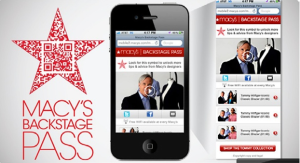Walmart is one of the largest retailers in the world. They are also, as no surprise, the most liked retailer on Facebook. With more than 31 million Facebook friends, Walmart is leading the pack when it comes to social media. So how does the retailer manage its social media presence so well? With a great plan and team.
In a Q&A with Ragan.com, Chad Mitchell, senior director of digital communications for Walmart, talked about their developmental process for social media. He said: “It’s really all about content and audiences. When we formed our digital team, one of our first tasks was to better understand our existing audiences as well as the ones we wanted to reach.” He then went on to say, “Next we looked at our content and developed a strategy for how we would deliver that content to key audiences and stakeholders.” The strategy the team came up with? Creating 7 Twitter accounts instead of just one. This way, the company can gear content towards specific audiences on different Twitter handles.
Walmart uses its different Twitter handles for different purposes. For example, @WalmartGreen is focused on sustainability, @WalmartNewsRoom is the handle used for press releases and public service announcements, and @WalmartVeterans is meant to engage in conversations with veterans and to discuss issues of importance to veterans. While the ability to balance and maintain 7 Twitter handles is impressive in itself, what is even more noteworthy about Walmart on Twitter is the way the marketing team devised the plan. They did not simply decide to create 7 Twitter accounts for fun, as Chad Mitchell explained in the Q&A, the team developed its objectives and then shaped its social media strategy to match those objectives. This type of approach to plan development really pays off.
Walmart CMO, Stephen Quinn, spoke at a marketing conference last year about how important social media is to the brand. He explained that the company was achieving a very high return on investment from Twitter and Facebook. The company, undoubtedly, attributes this to the high number of fans on these sites, and the time and attention spent engaging in conversations. Along with an internal team of employees, Walmart works with outside agencies to help maintain conversations with customers. Stephen Quinn emphasizes the importance of outside help for Walmart saying, “When you are [publishing] six, seven, eight posts a day, you need people who are able to turn on a dime and react to those things.”
Seeking the help of outside agencies has proven to be beneficial to Walmart as they continue to uphold their grand social media presence in 2014. The most important thing other brands should learn from Walmart is that success takes planning. As Chad Mitchell explained, planning and objectives must come before the action. Any brand can create a profile on social networks, but the key to seeing results and gaining success, is to have a well developed plan and a strong team to carry it out.








